How to apply
If you meet the eligibility requirements and can commit to respecting the rules of the programme, you can proceed with an application.
You can apply online from anywhere in the world, including within Australia. If you apply from outside Australia, you must be outside Australia when your WHV is granted.
Here are the items you need to have ready:
- Evidence of the specified work you have completed (employer’s ABN, your periods of work, payslips, contracts, etc.).
- A copy of your passport (passports if you have dual citizenship).
- Proof of funds, such as a recent bank statement or screenshot of your bank account. If your bank statement isn’t in English, it must be translated.
- A credit card to pay the application fee.
- Subclass 462 only: Additional documents for your citizenship.
The online application process is straightforward. Here is an overview of the steps:
- Select the correct visa type on the official website.
- Fill out the online application.
- Submit your application.
- Pay the application fee (AU$670).
- Wait for your WHV to be issued.
That’s it! If you want a more detailed walkthrough of all the steps, please keep reading.
Step 1 – Select the correct visa type on the official website
Start by selecting the correct Working Holiday page on the Department of Home Affairs website:
Next, select “Second Working Holiday Visa” or “Third Working Holiday Visa” as appropriate. Here, you can check the details of the visa you are applying for.
When you’re ready to begin, click the blue “Apply” button:
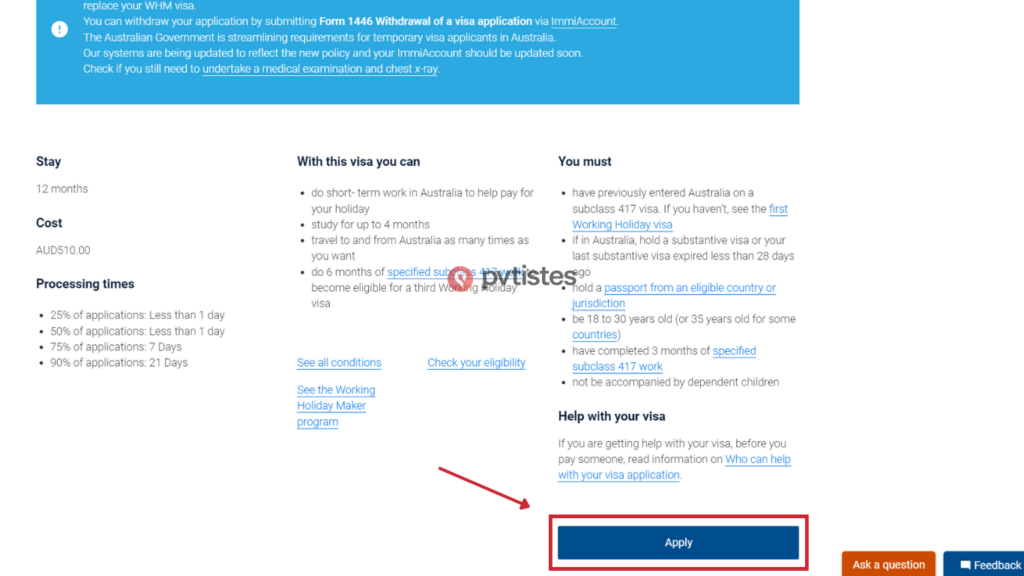
You will be redirected to the ImmiAccount login page:
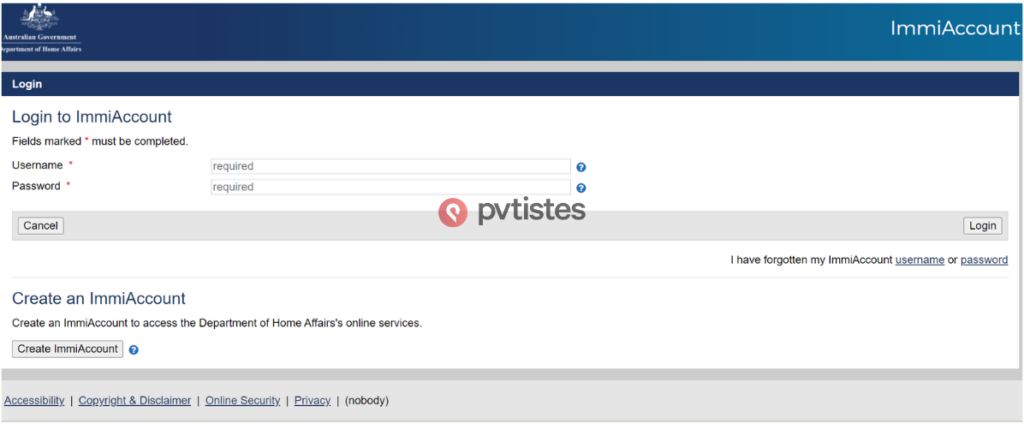
You should already have an ImmiAccount from your previous WHV application. If you have forgotten your login details, you can click the “I have forgotten my ImmiAccount username or password” or “I no longer have access to my multi-factor authentication app” links to reset your login.
If you need to create a new immiAccount, learn how here.
Step 2 – Fill out the online application
Once you have logged in to your ImmiAccount, under “My applications”, click “New Application” in the top-left corner:
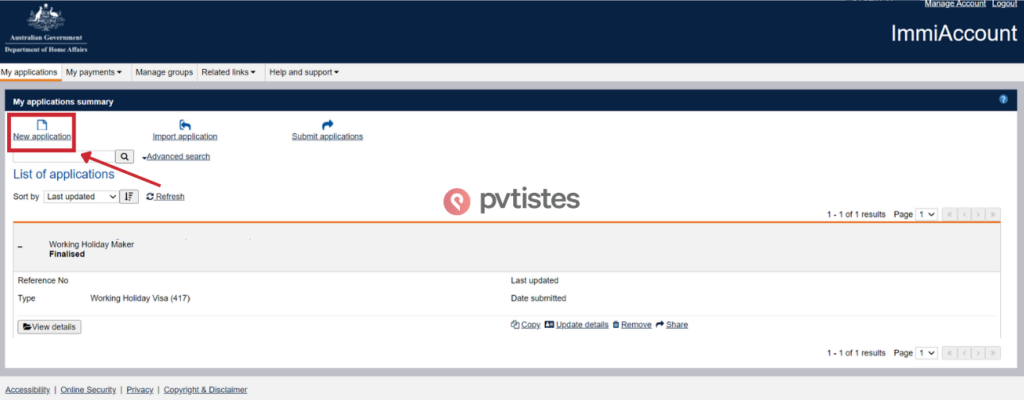
Select the correct subclass of WHV:
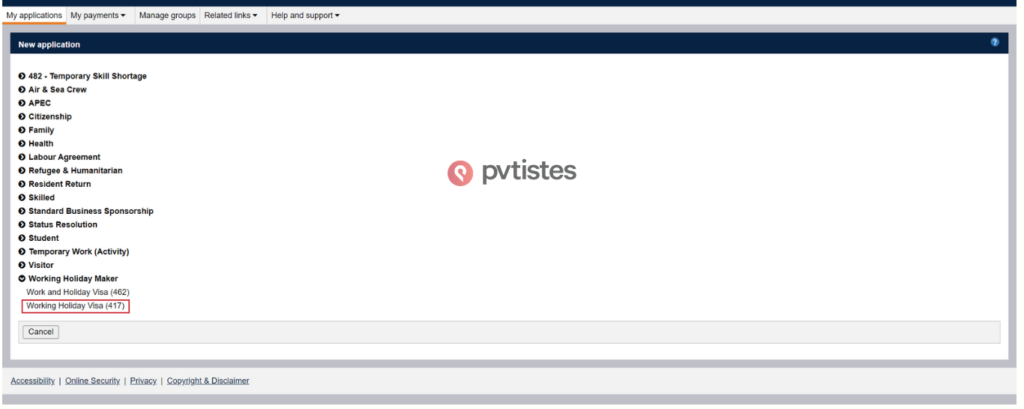
You will need to accept the terms and conditions to proceed.
You can save your visa application at any time from page 3 onwards by clicking “Save” in the bottom left-hand corner. This means you can return to the application in your ImmiAccount at a later date without having to start from scratch.
Application context
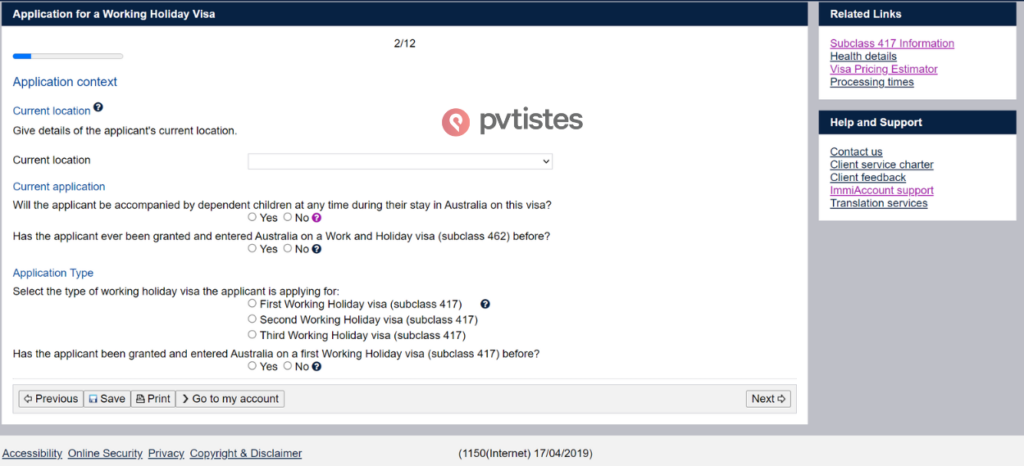
If you are no longer in Australia, select your current location. If you’re still in the country, choose Australia as your current location.
You can tick “No” to the current application questions, then select the relevant option of “Second Working Holiday visa” or “Third Working Holiday visa” as appropriate.
You will be asked some further questions that vary slightly depending on the answers you have provided.
When you apply for the Second WHV:
- Has the applicant ever obtained a first Working Holiday Visa and entered Australia on this visa?
- Has the applicant undertaken 3 months of specified work as the holder of a first Working Holiday Visa or other eligible visa?
When you apply for the Third WHV:
- Has the applicant ever obtained a second Working Holiday Visa and entered Australia on this visa?
- Has the applicant undertaken 6 months of specified work as the holder of a second Working Holiday Visa or other eligible visa?
If you answer “No”, it goes without saying that you will not be able to continue your WHV application.
Next, enter the reference number from your previous WHV. You can find this on the “Grant Notification” in the “Messages” section of your account. You can also find it under “Visa Grant Number” on your Grant Letter.
Finally, you need to enter a departure date if you’re applying from outside Australia. The date you give doesn’t really matter—you will have 12 months from the date your application is approved to enter Australia.
Click “Next” to continue.
Personal information
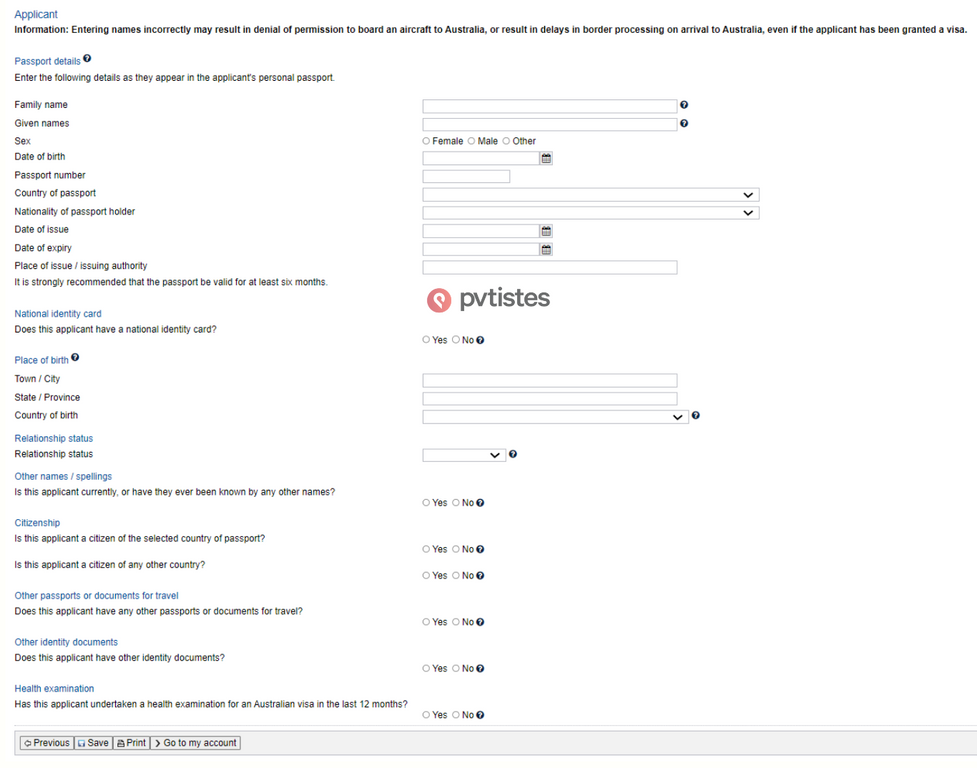
This section gathers your personal details—name, date of birth, sex, birthplace, etc. You will also need to give details of your relationship status, whether you have dual citizenship, whether you hold any other identity documents (e.g. some countries issue a national identity card), and whether you have been asked to undertake a medical exam for an Australian visa in the last 12 months.
Enter your details exactly as they appear on your passport. Check carefully for typos or errors! Any discrepancies between your application and your passport can lead to refusal to board your flight or delays in granting your WHV.
A note for common-law partners: If you want to stay in Australia as a couple, each one of you must have completed your own specified work and create a separate WHV application. You can choose “common-law” or “never married” as your relationship status; it won’t make any difference to your application approval.
Critical data confirmation
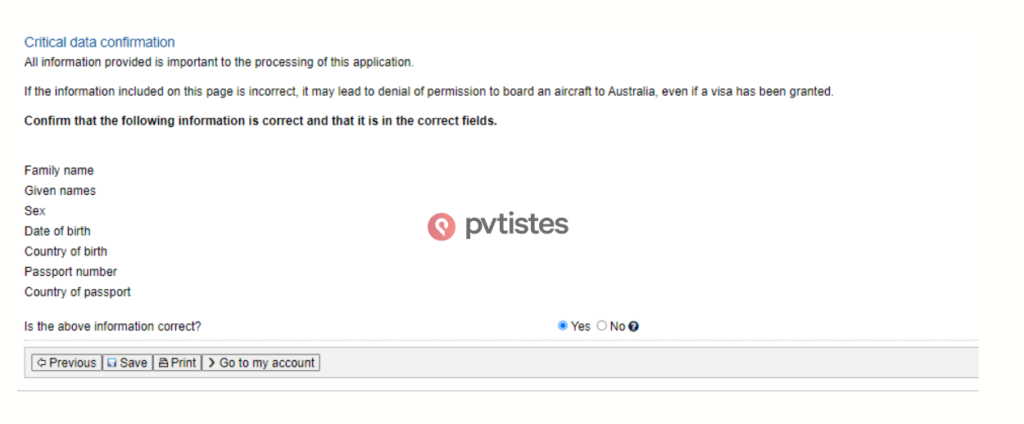
You will see a summary of the personal information and passport details you provided. Confirm that the information is correct.
Contact details
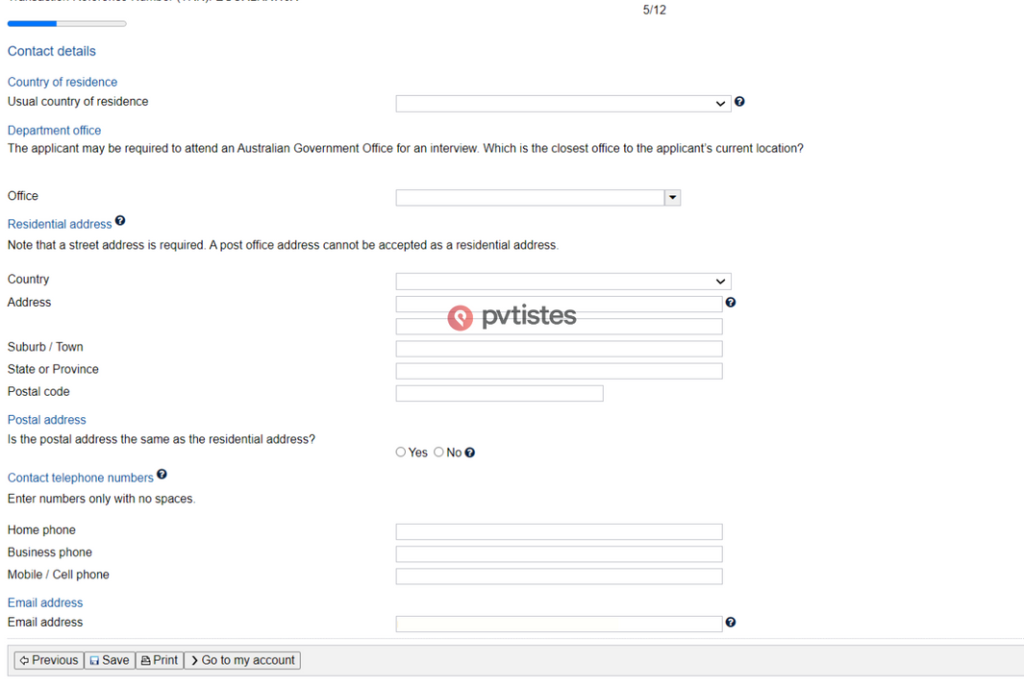
Enter your country of residence (if you’re away from home on a vacation or a WHV, enter your usual country of residence).
Although it rarely happens, you may be asked to attend an Australian Government Office for an interview. You have to select your nearest location, which can be the nearest office to your current location (it does not have to be in your home country).
As well as your phone number and email address, you will need to give a residential address. If you’re only spending a few months or even a year away from your home country, give your normal address in your home country. If you’ve been living abroad for a few years, give your “foreign” residential address.
Authorised recipient

If you answer “Yes” to authorising another person to receive correspondence on your behalf, you will need to provide their contact details and email address (with their consent), and attest that you have their permission.
If you answer “No”, all the information from the Department of Home Affairs will be sent to your own email address.
Occupation and education
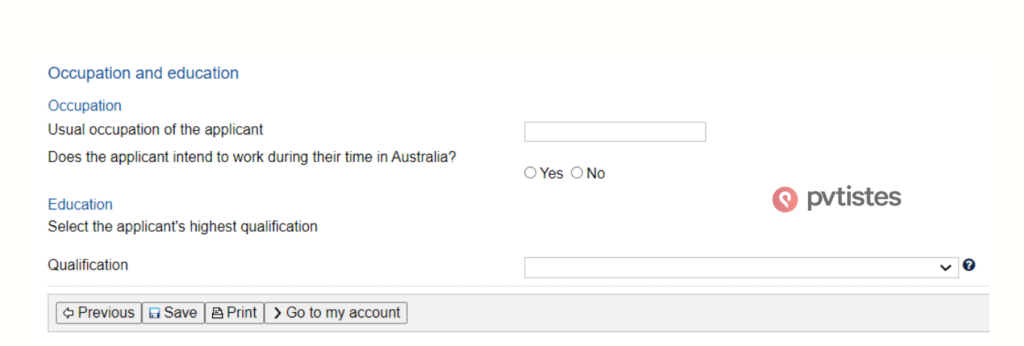
You must specify your current or usual occupation, the industry in which you would like to work in Australia, and your highest education level.
Depending on the answers you give about your occupation and preferred industry, you may be asked to take a medical exam. If you need to take a medical exam, you can learn more about what to expect here.
A note about qualifications: Your answer to this question doesn’t affect your chances of being granted a WHV (unless you are applying under Subclass 462 and an education requirement is part of your citizenship’s eligibility). It’s normally just for statistical purposes, so you can simply pick the closest option to your education level.
Specified work undertaken

This section is very important because it’s at this point in the application that you’ll need to prove your 88 or 179 days of eligible specified work. You will not be approved for your Second or Third WHV without this proof. If you’re unsure how to calculate your days or provide proof, please refer to our Complete guide to specified work in Australia.
Enter the Australian Business Number (ABN) and postcode of the companies you worked for, your start and end dates, and any other details. The postcode must meet the Australian government’s criteria for specified work.
If you worked for more than one employer, click “Add” to add more lines.
Next, you will need to provide more details about each employer and the type of work you did for the given period:
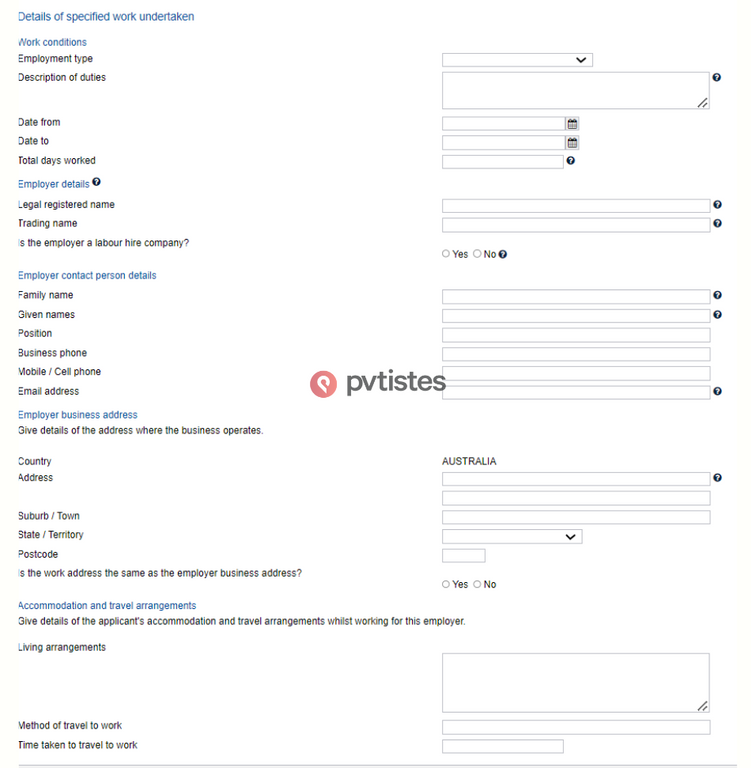
Make sure you list all your specified work.
Health declarations
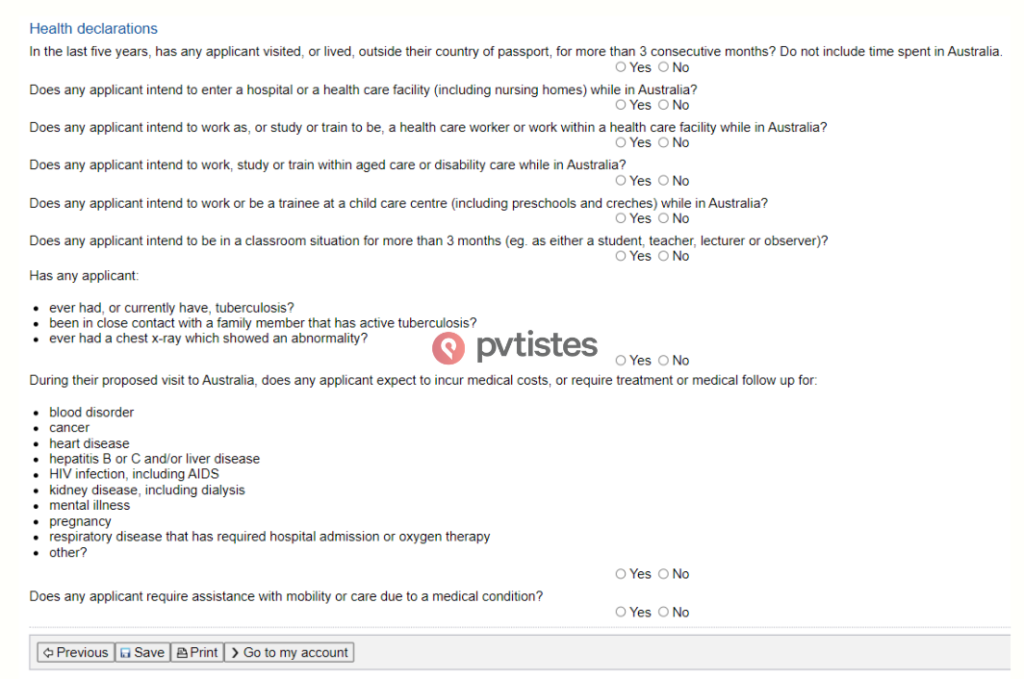
This page is a series of health-related questions. You must answer “Yes” or “No”.
If you have lived in any countries other than your home country for more than 3 months in the last 5 years, you will be asked to provide further details. Click on “Add details” and enter the country and dates of your stay.
You may be required to take a medical exam if you have spent time in a country with a high risk of tuberculosis in the last 5 years.
Character declarations
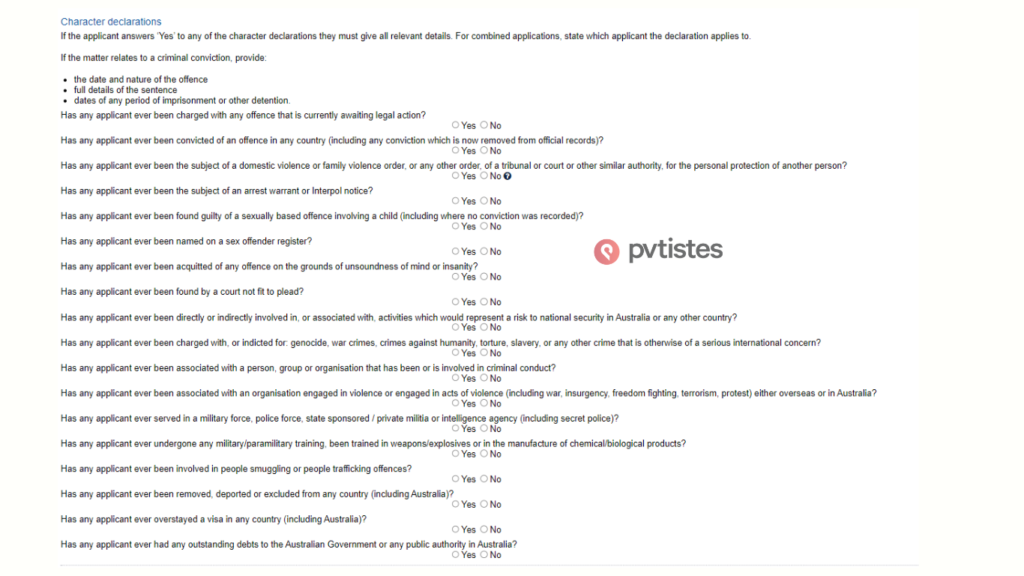
Answer “Yes” or “No” to the series of questions about your character. If you answer “Yes” to any of them, you will be asked to provide further details.
Working holiday declarations
Answer “Yes” or “No” to each of the statements. Note that if you answer “No”, you won’t be granted a WHV.
Declarations
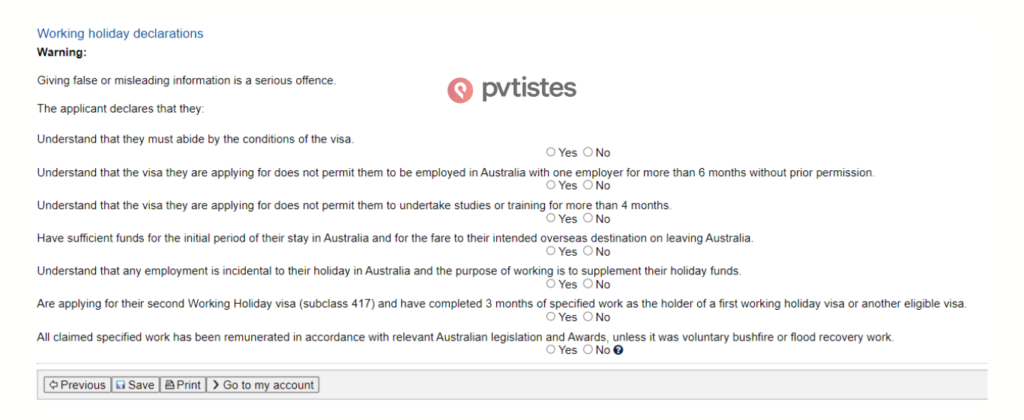
Answer “Yes” or “No” to each statement.
Review page

Now is your final chance to check that all the information you have entered is correct. Edits are possible as long as your session is saved but not yet submitted!
Attach documents
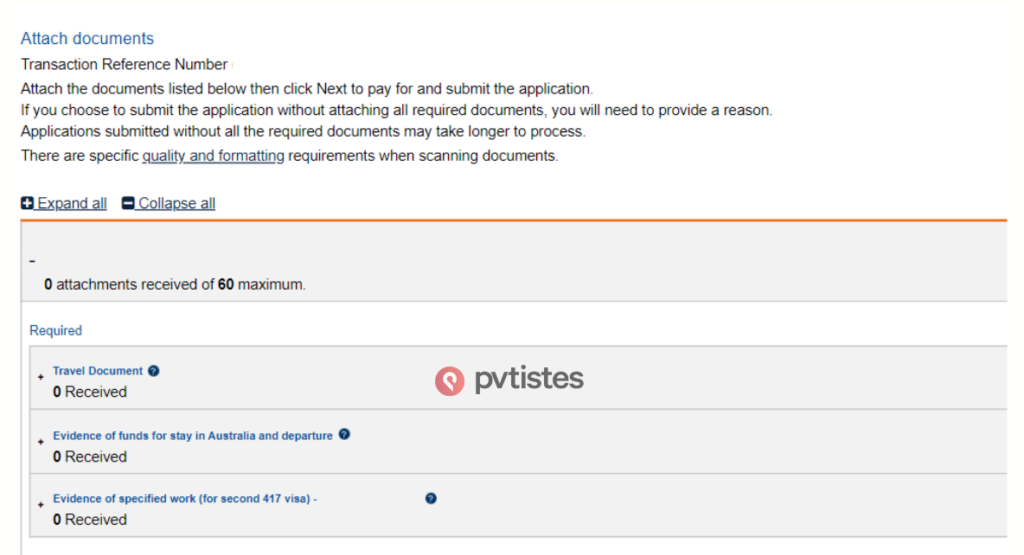
Attach the following supporting documents:
- A copy of your passport, which must be valid for the entire duration of your visa (passports if you hold dual citizenship).
- A screenshot of your bank account or a bank statement showing proof of funds (AU$5,000 + enough money to buy a return ticket if you don’t have one yet).
- Applicable proof of your eligible specified work (payslips, employment contract, tax documents, written reference from your employer, PAYG payment summary, piecework agreement, employer deduction agreement, bank statements for the specified period, etc.).
- Subclass 462 only: Any additional documents required for your citizenship.
For each document requested, select the file and click “Attach”. Pay attention to the requested file format.
Don’t hesitate to provide as many documents as possible proving that you completed the specified work. Your application can be delayed if the Australian government has to contact you asking for further evidence.
Step 3 – Submit your application

Click “Submit Now” when you are ready to submit the application.
Step 4 – Pay the fees
The fee is AU$670. There are no refunds if your application is rejected or if you fail to travel to Australia within 12 months of your visa being granted.
Select your payment method (most people pay by credit card) and enter your details. Click “Submit” to make the payment.
You should receive a payment confirmation message. Congrats, you have successfully submitted your application!
Step 5 – Wait for your visa
Most applicants receive their e-visa within a few hours or days. It could take longer if you’re required to provide additional proof of specified work, undergo medical examinations or provide further information about a criminal background.
To learn more about processing times, read on to the next chapter.












 Français
Français English
English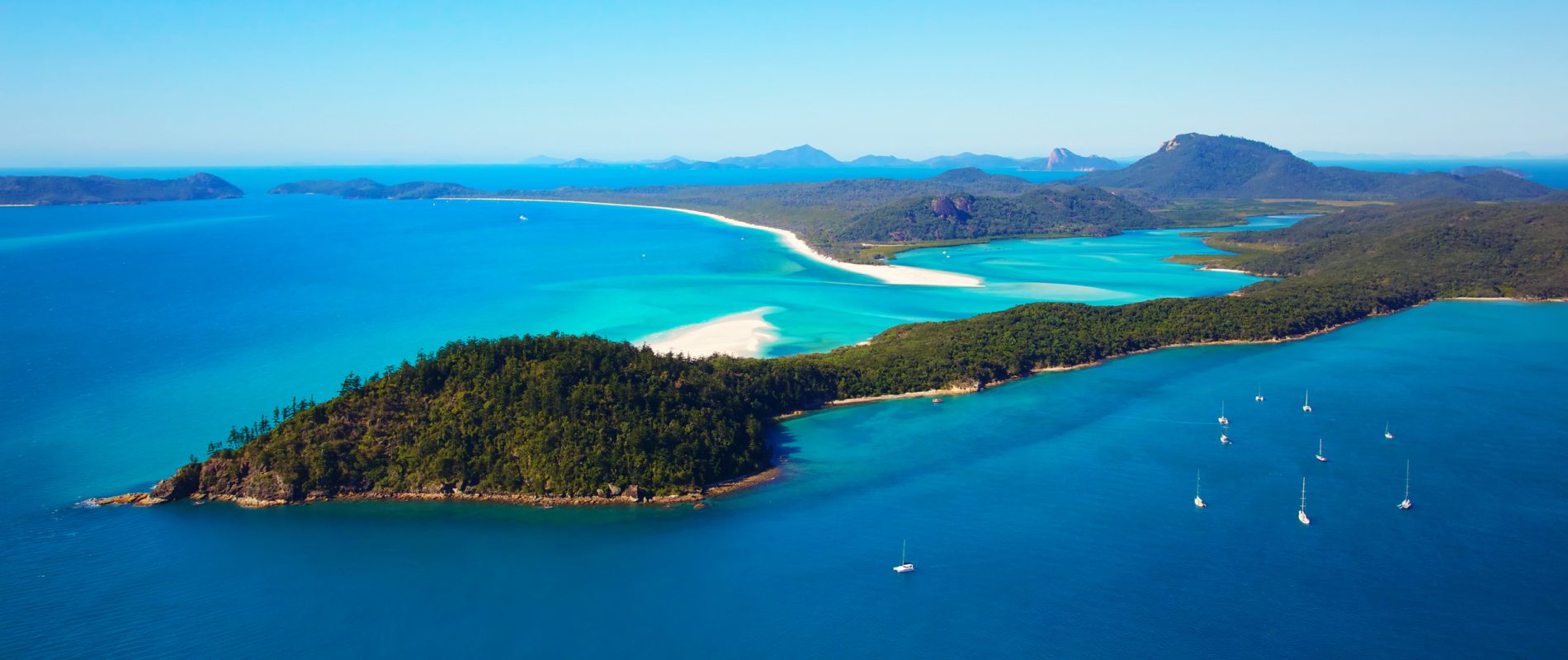


















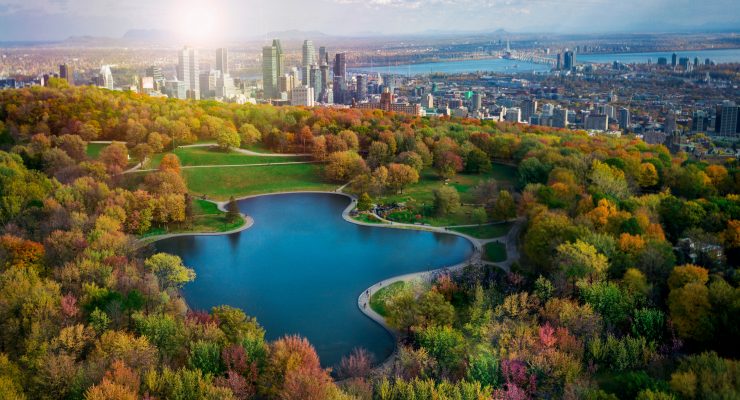
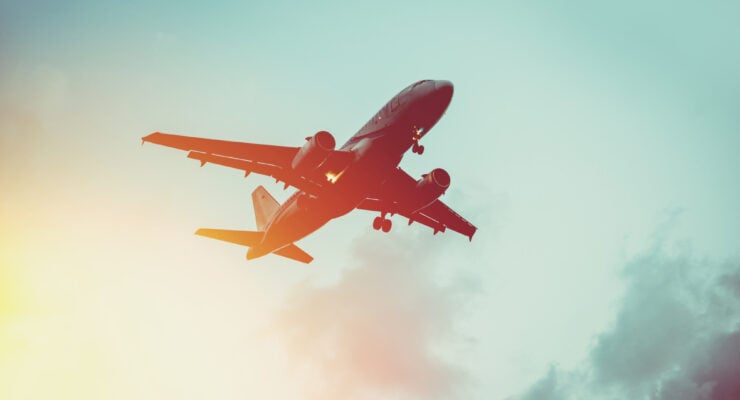


0 comments
{{like.username}}
Loading...
Load more